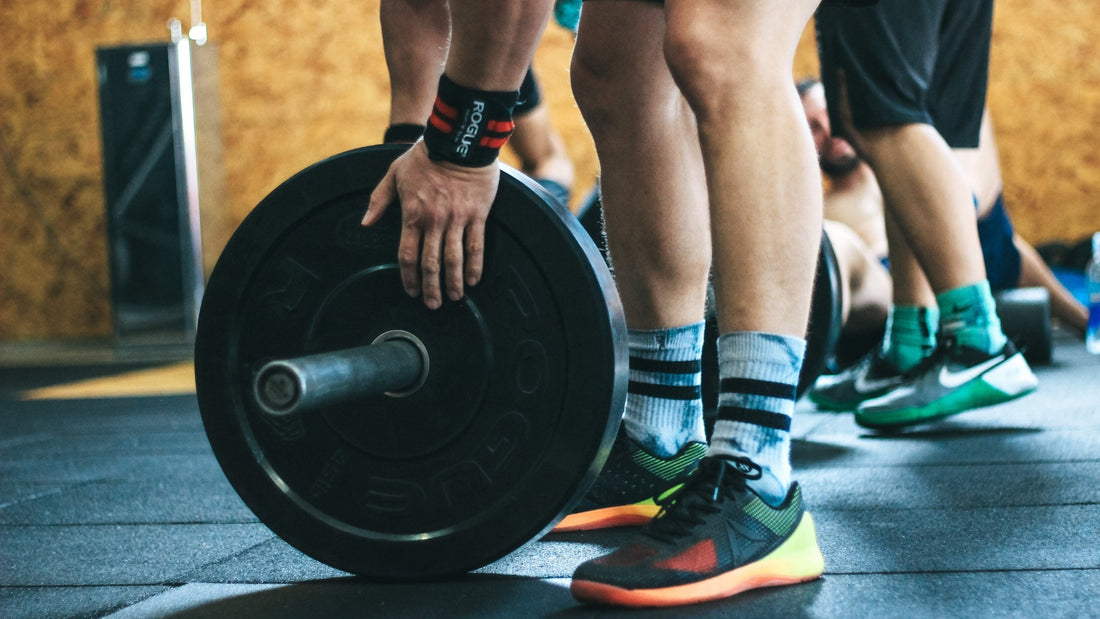
Mixed Grip Deadlift: When to Use It, How to Do It Safely
Share
If you’ve pulled heavy for any length of time, you’ve probably tried a mixed grip deadlift—one hand pronated (palm toward you), the other supinated (palm away). The appeal is obvious: opposing hand positions resist bar roll so your hips and back can keep driving when your fingers start to fail. The catch is that the mixed grip deadlift changes shoulder and biceps loading side-to-side, so it demands care. This guide breaks down who should use it, how to set it up, and how to keep progressing while protecting your tissues. You’ll also see where lift straps still shine and how PTI Grip slots into the session to keep your flow fast and your grip reliable—as a complement to straps, not a replacement.
Why lifters pick a mixed grip in the first place
-
Anti-roll leverage: The bar wants to spin out of your fingers. With hands opposed, one side “catches” the rotation the other would lose.
-
Minimal learning curve: You can adopt it in a single session; no thumb conditioning like hook grip.
-
Top-end testing: A mixed grip deadlift helps you probe your true strength without letting raw grip be the early limiter.
The trade-offs (and how to neutralize them)
-
Biceps tendon exposure (supinated side): Keep that elbow locked and the upper arm vertical. Never “curl” the bar to break it from the floor.
-
Rotational bias: Many lifters subtly twist toward the underhand side. Fight back with even lat tension, square hips/shoulders, and identical hand spacing from center. Alternate which hand is under across training blocks.
-
Bar path drift: Mixed grip deadlift can invite the bar forward if lats aren’t set. Cue “drag the knurl up your shins.”
(For background on the movement, skim the overview of the deadlift.)
A setup that holds under pressure
-
Feet and bar: Bar over mid-foot; hip-width stance with a slight toe-out.
-
Hands: Just outside the legs; one overhand, one underhand, knuckles down, thumbs locked.
-
Brace and preload: Big breath; pull the slack out until you feel the plates kiss the collars.
-
Even squeeze: Match hand pressure left to right; lock both elbows.
-
Push then pull: Drive the floor away, keep the bar grazing shins and thighs, and finish tall—ribs down, glutes through.
Common errors to audit
-
Soft elbow on the underhand side.
-
Uneven squeeze between hands.
-
Yanking the bar instead of tensioning first.
-
Letting the bar drift away from the body.
Programming that respects symmetry
-
Strength (once weekly): 4–5 sets of 3–5 reps at ~78–86%. Alternate your underhand side each mesocycle.
-
Peaking: Ramp to heavy singles using your strongest orientation. Back-off sets return to the opposite underhand to keep tissues even over time.
-
Hypertrophy: 3–4 sets of 6–8 at ~70% after your primary lift. Smooth tempo off the floor.
Where straps and PTI Grip both belong
-
Straps for absolute load: On 90%+ efforts, strap in so the limiting factor is legs and back—not fingers.
-
PTI Grip for pace and bar feel: Use PTI Grip on warm-ups, back-off volume, rows, and machines to keep sessions moving. The clamp preserves bar diameter and knurl feedback and wipes clean.
-
Raw grip stays honest: Finish with short farmer’s carries or timed holds.
Curious why PTI was built the way it was? Read Our Story.
Make it work: Mixed grip deadlift when load threatens your hold, alternate the underhand side across blocks, strap the top sets, and clamp PTI Grip on everything that benefits from fast setup and clean bar feedback. That two-tool approach keeps your training moving and your pull progressing.
